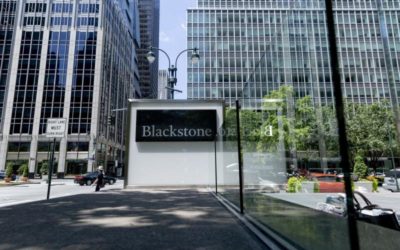Earnout provisions are making a comeback in private equity deals as investors try to address the market uncertainty caused by the coronavirus pandemic.
Earnout provisions allow private equity buyers to defer a portion of a deal’s purchase price over a period of time and tie the remaining payouts to performance milestones agreed to with the seller. Although they are most commonly used in life sciences deals, earnouts in 2019 accounted for 22% of deals outside of the life sciences space, according to a report published by mergers-and-acquisitions advisory firm SRS Acquiom.
Earnouts have become more popular as the economic uncertainty caused by the coronavirus pandemic has made it more difficult to predict company performance. Attorneys and financial advisers say incorporating earnout provisions can help private equity investors narrow the pricing gap with sellers.
“As much as we would have expected to see seller valuations come down, they really haven’t come down that much,” said Jeremy Swan, national director of the financial services and financial sponsors group at consulting firm CohnReznick. “Valuation is really hard to get your arms around.”
Swan estimates earnout provisions have entered into nearly half of the midmarket or lower-midmarket deals he sees these days.
Not only are earnouts becoming more common, but the time frames within which the earnouts get paid are also lengthening and the metrics by which they are measured are becoming more complex, industry experts say.
Around 29% of earnouts in deals tracked for the SRS Acquiom report spanned less than a year with another 24% extending for more than a year to less than two years. While buyers and sellers previously could predict a company’s near-term performance with a fairly high degree of confidence, the pandemic has thrown such predictions into disarray.
Eva Davis, a partner and co-chair of private equity practice at law firm Winston & Strawn, said that when the pandemic first hit in March and April, many of the earnouts in midmarket deals she had seen extended through the end of this year. However, by the summer, they had extended well into 2021 and now she notices earnouts for some companies reach out to 2022.
CohnReznick’s Swan also said he has observed earnout periods lengthen since the pandemic hit.
“In many cases, we’re seeing nine-to-18 month earnouts and we’ve seen one with 24 months,” he said. “I hadn’t seen a 24-month earnout in a deal since before the [2008-2009] financial crisis.”
Longer earnout time periods give companies more time to hit the performance milestones needed to achieve the earnouts, especially in the face of an unpredictable economic future.
“We saw too much change and too many things that were unpredictable that investors now realise they’re not that good at predicting,” Davis said.
Buyers and sellers of companies are also paying more attention to specific details negotiated in earnout provisions, including metrics used to measure the earnout and obligations investors have to sellers to help them hit those metrics.
Earnouts have historically been based on a combination of objectives with most of them tied to revenue or cash flow milestones. However, according to Christopher Letang, managing director at SRS Acquiom, with economic uncertainty making it harder to predict revenue and cash flows, investors are getting more creative in how they set up earnouts by also introducing other metrics, such as new product launches or store reopenings.
“There are a little less straight-up revenue tests and more tests that don’t fit neatly into other boxes,” he said. “With more money tied up in the earnout, issuers are looking at it as less of a lottery ticket and more as a real component of the deal consideration.”
Source: Wall Street Journal
Can’t stop reading? Read more
US Pipeline Operator ONEOK Inks Two Deals for $5.9 Billion
US pipeline operator ONEOK Inc. agreed to buy a Permian Basin rival and a controlling stake in...
Blackstone Is Said to Seek A$5.5 Billion Loan for AirTrunk Bid
Private equity firm Blackstone Inc. is in discussions with banks for a five-year loan of about...
Thrive Capital to lead multi-billion dollar OpenAI investment round at $100bn valuation
OpenAI, the company behind the popular AI tool ChatGPT, is in advanced talks to secure several...




